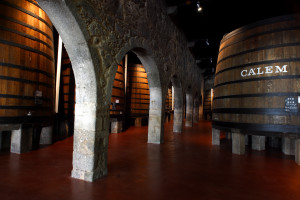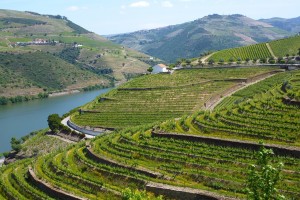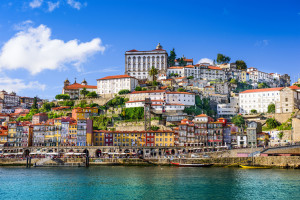Today we have a conference preview from Tania Oliveira and Paul Wagner. Tania and Paul will be presenting a session, complete with a side-by-side tasting of Portugal’s two greatest wines: Vintage Port and Colheita Port. This looks to be a fabulous wine tasting opportunity!
When it comes to teaching Port, we don’t always do a great job. Sure, we teach people about Vintage Port in all its glory, but somehow we fall short when it comes to the other styles, like Colheita Port. And at this year’s conference, Tania Oliveira plans to set the record straight.
There are two fundamental styles of Port – Ruby and Tawny – and both styles are produced from a blend of classic Portuguese grape varieties: Touriga Nacional, Touriga Franca, Tinta Roriz (known as Tempranillo in Spain), Tinta Cão, Tinta Barroca and Tinta Amarela, among others. (My personal favorite is Bastardo. I’ve never understood why someone hasn’t produce a dessert wine from this grape and called it “Sweet Bastardo”).
The grapes for all Port production are grown in the mountainous Douro Valley, arguably the world’s first demarcated wine appellation (1756). Running from north central Spain to its outlet in Oporto, the Douro River and its tributaries carve deep valleys through the Marão and Montemuro Mountains where vineyards are planted on steep, terraced slopes in schistous soils.
The process for growing grapes for Ruby and Tawny Port is entirely same. But, the change becomes clear in the production process.
Ruby Ports are bottle-aged and fruit focused. As young wines, they spend only two years in barrel before bottling to capture lively fruit and spice tones. The very best Ruby Ports are deeply concentrated wines that can age for decades. Made only in declared vintages – a few times in each decade – Vintage Ports are identified early in their lives and represent the best (and most expensive) style of Ruby Port.
Tawny Ports, on the other hand, are driven by complexity from extended aging in oak. Unlike Ruby Ports, Tawny Ports develop complex, mature aromas and flavors of toffee, dried fruits and toasted nuts. Simpler Tawny Ports are blended and released after three years in barrel. More complex styles are Tawny Ports with “an indication of age,” labelled as ten, twenty, thirty and even forty years old.
The greatest and most complex of all Tawny Ports are Colheita Ports: single harvest Tawny Ports aged for a minimum of seven years in cask – though many spend much longer in barrel. Despite the minimum seven year aging period, top producers that specialize in Colheita Ports choose not to bottle their wines until they receive an order, as indicated by the bottling date on the back label. This means wines spend decades, or even longer in barrel before being bottled.
There’s something inexplicably seductive about roaming a cask-lined cellar of Colheita Ports and stumbling upon one marked with your birth year in chalk – you just want to reach out and hug it.
While Ruby and Vintage Ports should be consumed within a few days of opening, Tawny and Colheita Ports can live for weeks after popping the cork. This makes them much more successful as wines in a restaurant setting, and at home. It’s a rare couple that can finish a bottle of Vintage Port over two or three days, but a bottle of Colheita Port from the year they were married can be enjoyed over many memorable dinners in the course of a few weeks.
Unlike many other styles of Port, which are bottled in modern bottling lines, Colheita Ports are usually hand bottled in the Port houses of Vila Nova de Gaia – each bottle hand-filled, hand-corked, and hand-labelled.
At this year’s conference, Tania Oliveira of Sogevinus will offer a selection of Vintage and Tawny Ports as her seminar explores the relationship between Portugal’s two greatest wines. This session will be held on Friday, August 11 at 4:45 pm as part of SWE’s Annual Conference.


